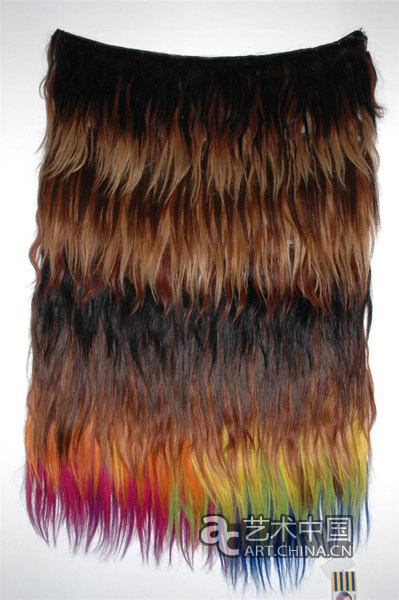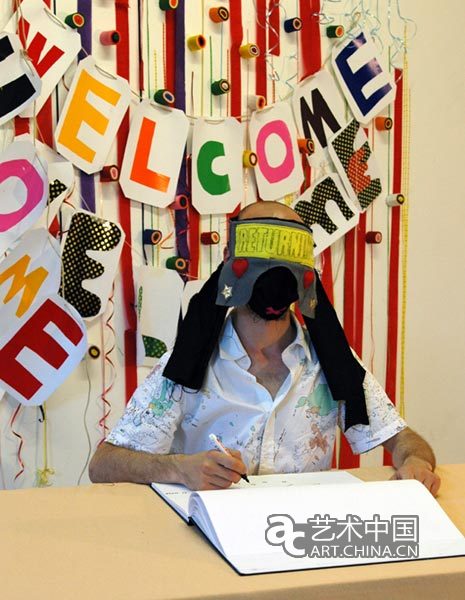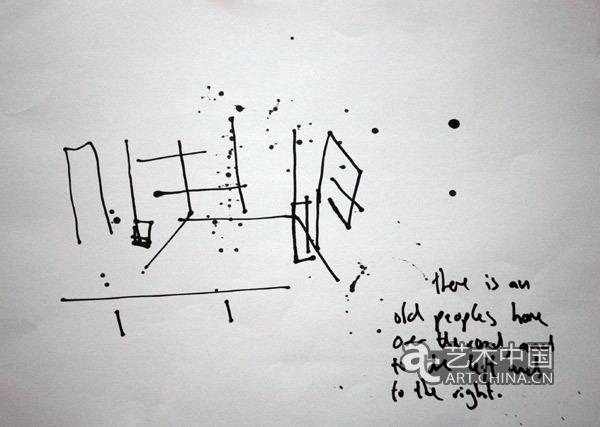
100% Human, dyed real human hair, fabric, thread 120x80cm 2008
純種人,真人頭發(fā)、織物、針線,120x80厘米,2008
Ashery has been working with hair as a material and a referent, in various projects and contexts. 100% Human, 2008-9, are three rugs; blond, black and patterned coloured. Ashery made the rugs from real human hair. Apart from the historical associations of human hair in relation the holocaust, the rugs were made whilst thinking about the changing value and economy of real hair today, as it is taken away from people and used for fashion and art.
阿瑟瑞在許多方案和語境中都將頭發(fā)當做一種材料和對象。純種人(2008-9)是三條毛毯,白色、黑色、彩色有圖案毛毯各一。阿瑟瑞用真人頭發(fā)制作這些毛毯。人類的頭發(fā)除了能讓人聯(lián)想到歷史上的大屠殺之外,用頭發(fā)制成的毛毯也能讓人思考在當今時代真人頭發(fā)日益改變的經(jīng)濟價值,例如它從人們頭上脫離下來,而被用于時尚和藝術。
?

?

Returning, interactive space
回歸, 互動空間
Returning is an interactive space where visitors wear a blind fold and draw their childhood bedroom from memory and leave a sentence next to it. The final drawings tend to have gaps between the lines in what meant to have been continuous shapes, and are akin to gaps in the processes of memorising a space and a time. The piece is potent in relation to movements of people and immigration, many people today do not leave where they spent their childhood. This also refers to the Universal Human right of people to return to their birth place.
“回歸”是一個互動空間,在那里,參觀者被蒙住雙眼,然后根據(jù)回憶畫出他們童年的臥室,并且在旁邊寫一句話。最終的圖畫會與它應該的樣子有很大差距——它本應該是連續(xù)的形狀——并且也必然會在回憶某個時空的過程中產(chǎn)生這種差距。這些碎片都是非常有力的,因為它們與人口流動以及移民有關。許多人至今也沒有離開過他們童年生活的地方。這也暗指人們普遍具有的返回他們出生地的人權。
?